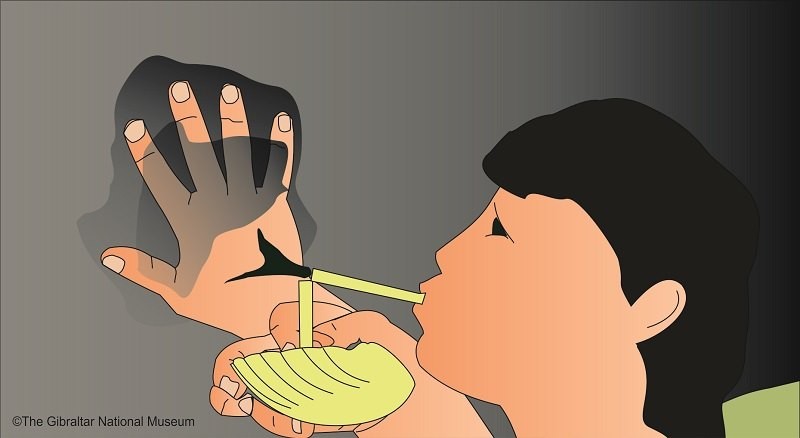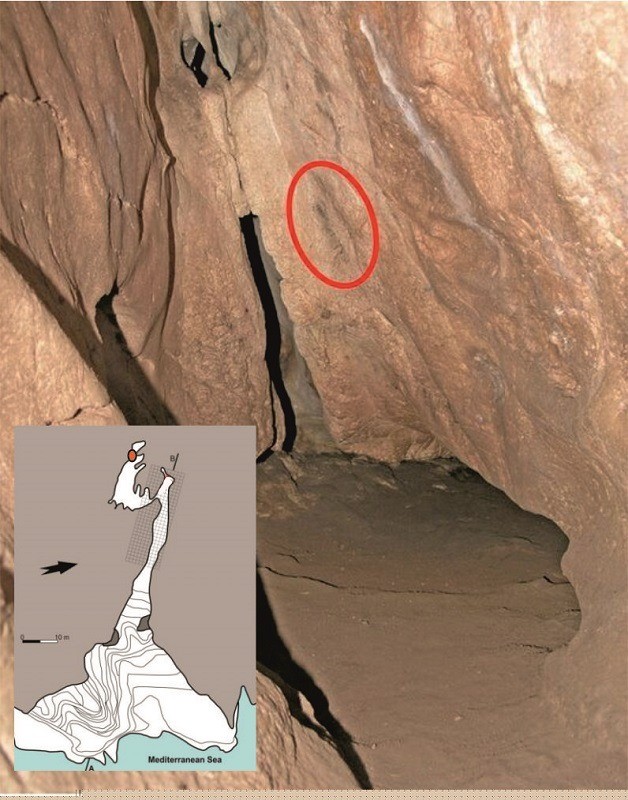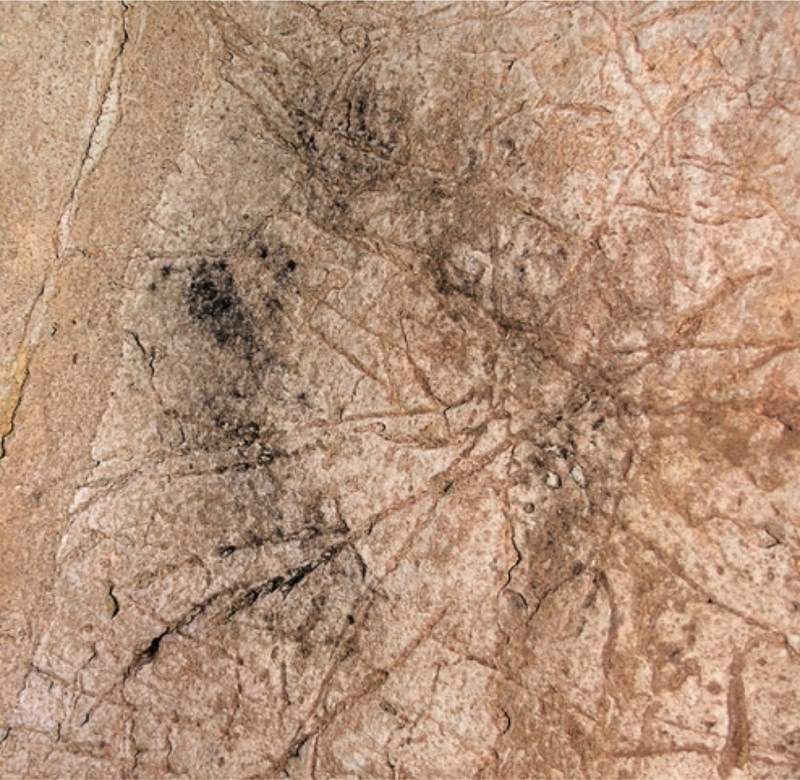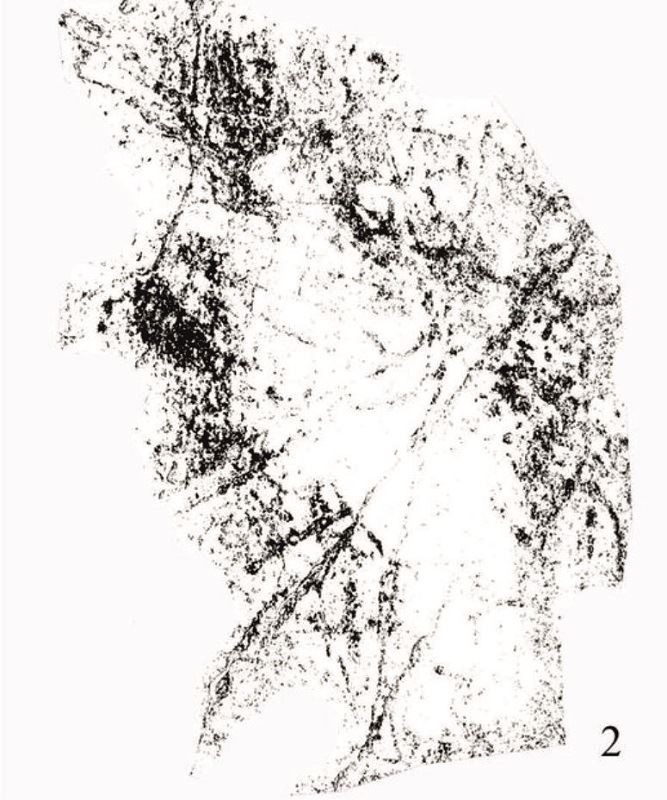Cave Art Hand stencil at Gorham’s Cave

Palaeolithic hand stencilling technique.
Cave Art Hand stencil at Gorham’s Cave
Several cave paintings have been recorded at Gorham’s Cave, the majority being representations of animals, but there is also what is known as a ‘negative hand stencil’.
These were usually produced by projecting or spraying pigment over the hand and forehand resting on the rock. The stencilling technique could have been applied by either blowing the pigmented solution directly from the mouth or using some kind of straw and container. Many of these artistic representations are made using organic pigments such as charcoal, which allows for the direct dating of the art using Carbon 14 as is the case with the hand stencil in Gorham’s Cave.
These hand stencils usually date from the early Upper Palaeolithic, from the Gravettian, a culture that developed in Europe between 30,000 and 23,000 years ago. The one at Gorham’s Cave is somewhat more recent, from 20,000 years ago and ascribed to the Solutrean, a period of the cave’s occupation which is well recorded in the archaeology. There are other late dates for hand stencils in Europe such as those at Pech-Merle Cave in France.
Its state of conservation made it difficult to obtain all the anthropometric measurements necessary to calculate the individual’s body size, but some features such as the width of the wrist or the general size of the palm and fingers, suggest that a small hand which would be proportional with an individual shorter than 170cm – possibly a woman or, more likely, a child or young person.

Location of the hand stencil inside Gorham's Cave.

Hand stencil from Gorham's Cave.

Computer enhanced image of the hand stencil from Gorham's Cave.
Published: April 13, 2020
Other similar VM - Cave Art
18-20 Bomb House Lane
PO Box 939,
Gibraltar
